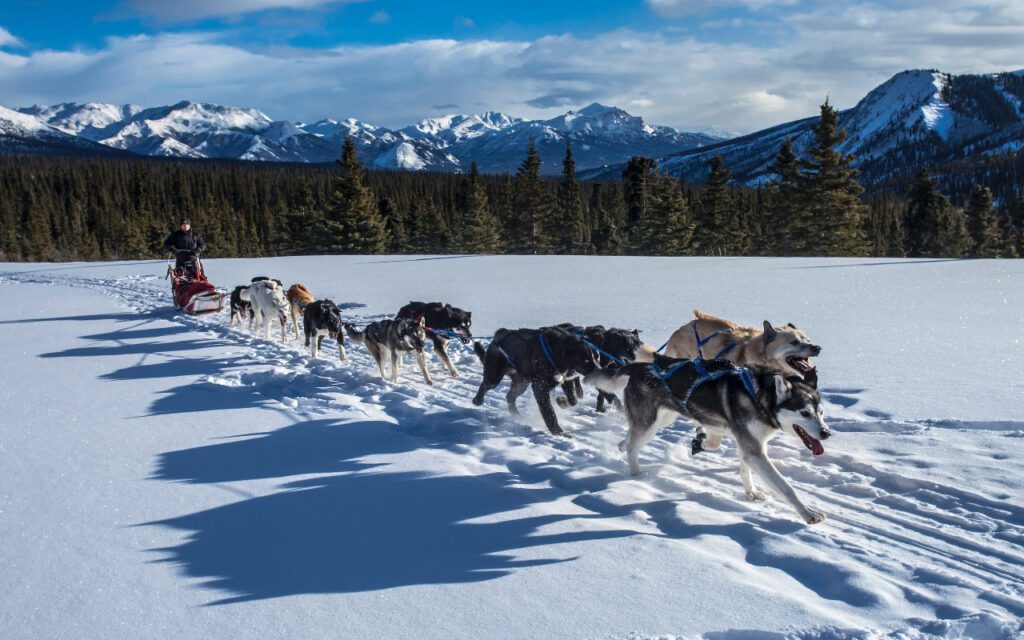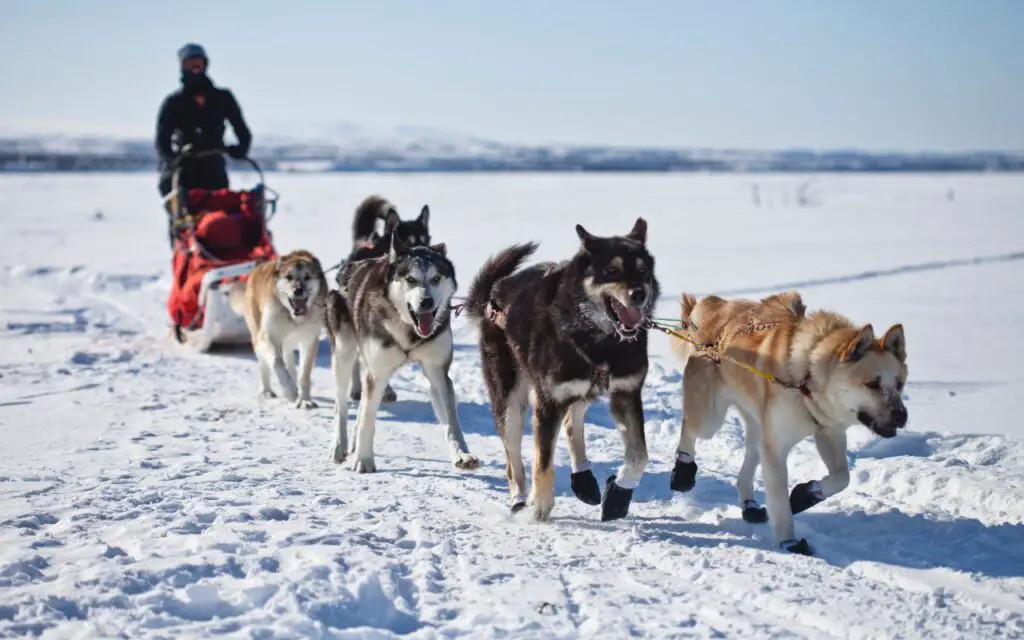Dog sledding is a popular winter sport and a common activity in places with snow all year round. It is an activity that requires sleds and dogs to pull them across the snow.
However, this activity has raised concerns about the welfare of the animals used to pull the sleds.
In this article, we will explore whether dog sledding is cruel by examining its history, how it works, the controversies surrounding it, the welfare concerns for sled dogs, how dog sledding companies address welfare concerns, and what alternatives are available to traditional dog sledding.
- Is Dog Sledding Cruel?
- What is Dog Sledding?
- History of Dog Sledding
- How Dog Sledding Works
- Types of Dog Sledding
- Why is Dog Sledding Controversial?
- What Are the Welfare Concerns for Sled Dogs?
- How Do Dog Sledding Companies Address Welfare Concerns?
- What Are Some Alternatives to Traditional Dog Sledding?
- FAQs
- Q: What is dog sledding?
- Q: What is considered cruelty in dog sledding?
- Q: What is the Iditarod?
- Q: What is a musher?
- Q: Are dogs used in dog sledding working animals?
- Q: What is a dog sledding tour?
- Q: Is there a way to do dog sledding ethically?
- Q: How do dog handlers treat their dogs in dog sledding?
- Q: Have there been dog deaths during dog sledding?
- In Conclusion
Is Dog Sledding Cruel?

Dog sledding is cruel if not done properly. When conducted responsibly and ethically, dog sledding can be a rewarding activity for both the dogs and their handlers.
Many sled dogs, such as Siberian Huskies and Alaskan Malamutes, are bred for endurance, strength, and cold weather tolerance, making them well-suited to the sport.
These dogs often enjoy the physical activity, mental stimulation, and teamwork involved in dog sledding.
While the practice of dog sledding does require a certain level of training and discipline on the part of both the animals and their handlers, most organizations that promote this form of transportation maintain high standards to ensure that the dogs are treated humanely.
The primary concern raised by critics of dog sledding is that it forces animals to pull heavy loads in extreme temperatures over long distances.
However, this is not necessarily true; in fact, many organizations take great care to ensure that the dogs are allowed frequent rests throughout their journey and only have to carry light loads relative to their size and strength.
What is Dog Sledding?

Dog sledding, also known as mushing, is an activity that originated in colder countries where snow is prevalent. It involves sleds that are pulled by dogs.
Typically, it involves a team of dogs, with the lead dog guiding the rest of the pack. The person in control of the sled is called a musher, while the dogs are referred to as sled dogs.
History of Dog Sledding
The history of dog sledding dates back to around 2,000 years ago when sled dogs were used for transportation, hunting, and trading in colder regions.
The Inuit, a group of indigenous people in Alaska, were known for using sled dogs to travel through the snow.
Later, dog sledding became popular in Canada and the United States as a winter sport and a form of transportation. In the early 1900s, the first famous dog sled race, the All Alaska Sweepstakes, took place in Nome, Alaska.
How Dog Sledding Works
Dog sledding involves a sled, a musher, and a team of dogs. The sled is usually made of wood and metal and is designed to glide over the snow.
The musher stands on the sled and uses reins to control the direction and speed of the dogs. The dogs are usually harnessed in a line, with the lead dog at the front and the others following behind. The lead dog is responsible for guiding the rest of the pack.
Types of Dog Sledding
There are different types of dog sledding, including recreational dog sledding, which involves taking tourists on a dog sled tour, and racing, which can be done over long distances or in a sprint format.
The most famous dog sled race is the Iditarod, a 1,000-mile race in Alaska, which takes place every March.
Why is Dog Sledding Controversial?
Dog sledding has faced criticism from animal rights activists who view it as a form of animal cruelty.
The controversy surrounding dog sledding is mainly due to two reasons – animal rights and ethics and concerns about cruelty and abuse.
Additionally, the Iditarod race has faced controversy regarding the treatment of dogs during the race.
Animal Rights and Ethics
The use of animals for human entertainment has always been a controversial topic. Some people argue that animals should not be used for human entertainment, as it is cruel and goes against their natural instincts.
Animal rights activists maintain that sled dogs are no exception and should not be treated as a means of entertainment. They argue that these dogs are forced to work and are denied the freedom to express natural behaviors.
Cruelty and Abuse
Another significant concern related to dog sledding is cruelty and abuse. Some people feel that sled dogs are subjected to cruel living conditions that can affect their physical and mental well-being.
These concerns include tethering dogs on chains and keeping them in kennels for long periods. In some cases, the use of physical violence and neglect has been reported.
Iditarod Controversy
The Iditarod race, a famous dog sledding event, has faced controversy regarding the treatment of dogs during the race.
Critics claim that dogs are forced to race long distances, suffer injuries, and sometimes die during the race. However, supporters of the Iditarod argue that there are strict rules in place to ensure that the dogs are well taken care of during the race.
What Are the Welfare Concerns for Sled Dogs?
The welfare of sled dogs is a significant concern that cannot be ignored. Given the nature of their work, sled dogs have a unique set of welfare concerns that must be addressed. These include providing the dogs with adequate shelter, nutrition, and exercise.
Additionally, it is important to ensure that sled dogs are properly trained and supervised in order to prevent accidents or injuries.
Working Conditions for Sled Dogs
One of the main welfare concerns for sled dogs is their working conditions. Sled dogs are made to pull sleds over long distances, which can be challenging and tiring. Dogs need adequate rest, food, and hydration, which must be provided by their handlers during working hours.
Training and Socialization
Sled dogs need to undergo rigorous training and socialization to be able to pull sleds and work well with other dogs. Training should be humane and positive, and the dogs must be socialized to prevent aggression towards other dogs, people, and other animals.
Chain vs. Penning
Another significant welfare concern for sled dogs is their housing. Some sled dog handlers keep their dogs tethered on chains, while others keep them in pens.
Both methods have their advantages and disadvantages. Keeping dogs tethered on chains can increase aggression and prevent dogs from expressing natural behavior, while penning can reduce exercise and socialization opportunities for the dogs.
How Do Dog Sledding Companies Address Welfare Concerns?
Dog sledding companies have a responsibility to ensure the welfare of their dogs. There are various ways that dog sledding companies can address welfare concerns.
Husky Farm and Kennel Practices
Husky farms and kennels are the places where sled dogs are bred, trained, and housed. These places play a significant role in the well-being of the dogs.
Many dog sledding companies have set up their farms and kennels, where they maintain high standards of welfare for their dogs. These companies invest time and money in their dogs, ensuring that they have proper nutrition, exercise, and socialization.
Veterinary Care
Veterinary care is another crucial aspect of dog sledding. Sled dogs are prone to injuries and diseases that require immediate attention. Dog sledding companies must provide regular veterinary care to their dogs to ensure that they remain healthy and injury-free.
Tourism vs. Working Sled Dogs
Some dog sledding companies use sled dogs for tourism purposes, while others use them for work purposes. Tourism companies may have fewer working hours for their dogs and may allow more rest and socialization time than those used for work purposes.
What Are Some Alternatives to Traditional Dog Sledding?
For those who are concerned about the welfare of sled dogs, there are various alternatives available to traditional dog sledding.
Alternative Uses for Sled Dogs
Sled dogs have been used for other purposes, such as search and rescue, therapy dogs, and hunting dogs. These alternative uses allow sled dogs to work while ensuring their well-being and natural behavior.
Greenlandic Sled Dog Culture
Greenlandic sled dog culture offers a different approach to dog sledding by emphasizing the importance of using dogs in a humane and ethical way. The culture promotes love and respect for the dogs while focusing on their well-being.
Humane and Ethical Dog-Powered Sports
There are various humane and ethical dog-powered sports that do not involve dog sledding. These activities include canicross, bikejoring, and skijoring. These activities allow dogs to work and exercise while ensuring their welfare and safety.
In conclusion, dog sledding remains a controversial issue due to concerns about animal welfare, abuse, and cruelty. It is up to dog sledding companies and handlers to address these concerns and ensure the welfare of their dogs.
The alternatives to traditional dog sledding emphasize the importance of humane and ethical treatment of animals while promoting their well-being.
FAQs
Q: What is dog sledding?
A: Dog sledding, also known as sled dog racing or mushing, is a winter sport that involves using a team of dogs to pull a sled over snow and ice.
Q: What is considered cruelty in dog sledding?
A: Cruelty in dog sledding can take many forms, such as overworking the dogs, not providing them with adequate food or shelter, or physically abusing them.
Q: What is the Iditarod?
A: The Iditarod is a famous long-distance dog sled race that takes place in Alaska every year.
Q: What is a musher?
A: A musher is a person who drives a dog sled team.
Q: Are dogs used in dog sledding working animals?
A: Yes, dogs used in dog sledding are considered working animals.
Q: What is a dog sledding tour?
A: A dog sledding tour is a guided excursion where participants can ride in a dog sled and experience the sport of dog sledding firsthand.
Q: Is there a way to do dog sledding ethically?
A: Yes, there are ethical and responsible ways to participate in dog sledding. This includes proper care and treatment of the dogs, not overworking them, and providing them with adequate food and shelter.
Q: How do dog handlers treat their dogs in dog sledding?
A: Responsible dog handlers in dog sledding treat their dogs with care and respect. They ensure their dogs are adequately fed, sheltered, and receive veterinary care when needed.
Q: Have there been dog deaths during dog sledding?
A: Unfortunately, there have been instances of dog deaths during dog sledding, mainly in races or operations that prioritize profit over the welfare of the animals.





Leave a Reply